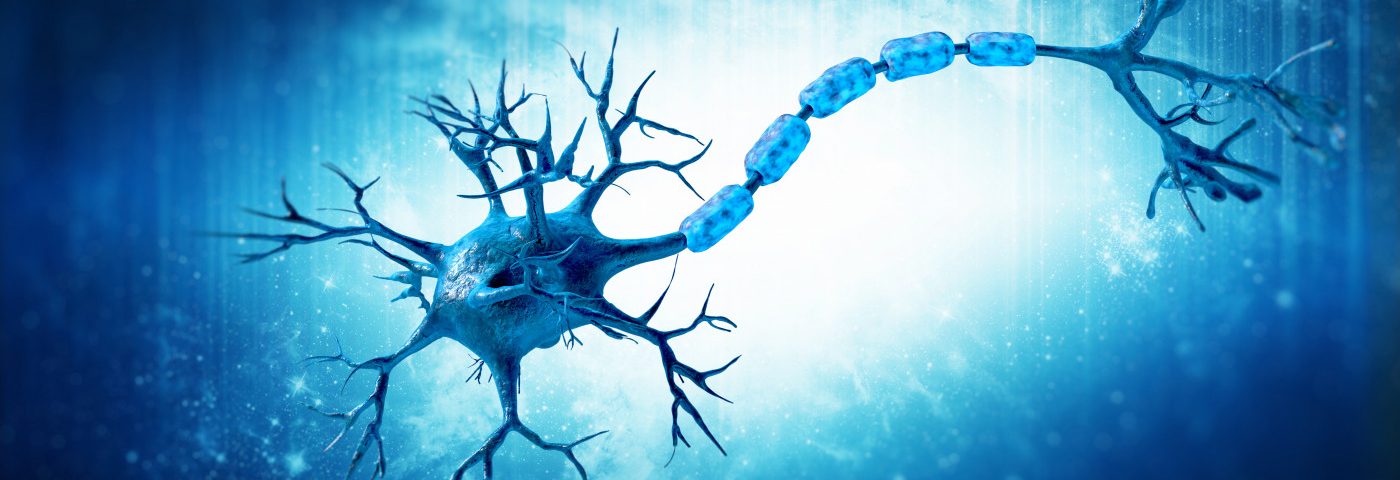Newly Discovered Type of Immune Cells May Be Key in Treating MS

A recently identified group of immune cells saved damaged nerve cells from death and promoted nervous system repair, a new study suggests.
This finding may represent new promise for treating neurodegenerative diseases such as multiple sclerosis (MS) and amyotrophic lateral sclerosis (ALS).
The study, “A new neutrophil subset promotes CNS neuron survival and axon regeneration,” was published in the journal Nature Immunology.
MS is an autoimmune neurodegenerative disorder caused by the central nervous system (CNS, the brain and spinal cord) being attacked by a person’s own immune system, resulting in inflammation and neuronal death.
Due to the poor regenerative capacity of the CNS, people with MS experience progressive disability. That’s why new therapies are needed to relieve and reverse this neurological decline.
“I treat patients who have permanent neurological deficits, and they have to deal with debilitating symptoms every day. The possibility of reversing those deficits and improving the quality of life of individuals with neurological disorders is very exciting,” Benjamin Segal, MD, said in a press release. Segal is the study’s senior author and co-director of the Neurological Institute at Ohio State University Wexner Medical Center.
The modulation of the immune response to CNS damage has been considered as a potential strategy to promote neuroprotection and regeneration. A deeper knowledge of immune cells and their mechanisms of action may lead to the development of novel immunotherapies envisioning the functional recovery of brain injuries.
An earlier study in murine models injured in the optic nerve showed that neuronal damage was prevented by zymosan, a fungal cell wall extract with neuroinflammatory properties. This compound induced inflammation, leading to the rescue of retinal ganglion cells (RGCs) from death and promoting their regeneration. (RGCs are a type of neuron located near the inner surface of the retina of the eye).
However, the mechanisms underlying zymosan-mediated neurorepair are not fully understood.
Now, researchers used a mouse model — injected with zymosan after an induced injury in the eye — to better understand the compound’s mechanism of action.
An accumulation of a new type of immature neutrophils (white blood cells involved in immune reactions) in the vitreous fluid (gelatinous mass that fills the space in the eye between the lens and the retina) was observed in response to zymosan treatment.
These cells showed protective and regenerative properties, as they prevented the death of damaged nerve cells in the optical nerve and partially overturned the damage. Researchers also noted that these properties were mediated by the secretion of growth factors — proteins able to stimulate cell proliferation and wound healing.
The team suggested that these neutrophils may modulate nerve cells in the retina, which. then promote or amplify RGC survival and neuronal growth, possibly by producing nerve growth factor (NGF) and insulin-like growth factor 1 (IGF-1).
“This immune cell subset secretes growth factors that enhance the survival of nerve cells following traumatic injury to the central nervous system. It stimulates severed nerve fibers to regrow in the central nervous system, which is really unprecedented,” Segal said.
To further assess the therapeutic power of these cells, mice with injuries in the optic nerve and spinal cord were injected with the immature neutrophils. A growth of new nerve cells was observed in the animals, showing the ability of these neutrophils to trigger neuronal regeneration throughout the CNS.
“We found that this pro-regenerative neutrophil promotes repair in the optic nerve and spinal cord, demonstrating its relevance across CNS compartments and neuronal populations,” said Andrew Sas, MD, PhD, a lead author of the study.
In the study, human cells with similar characteristics of those immature neutrophils found in mice also showed an ability to repair and regenerate the nervous system.
“A human cell line with characteristics of immature neutrophils also exhibited neuro-regenerative capacity, suggesting that our observations might be translatable to the clinic,” Sas said.
Researchers now are planning to isolate these cells and grow them in the lab to enhance their therapeutic effect. The cells then could be injected directly into patients and potentially prevent the progression of neurological deterioration.
“Our findings could ultimately lead to the development of novel immunotherapies that reverse CNS damage and restore lost neurological function across a spectrum of diseases,” researchers wrote.
“There’s so much that we’re learning at the bench that has yet to be translated to the clinic, I think there’s huge potential for future medical breakthroughs in our field,” Segal said.
The mechanism of action of these neutrophils also makes them a possible candidate for multimodal therapy, a type of treatment in which different therapies are delivered at the same time. These cells, together with compounds that block the inhibition of neuron growth, are expected to save dying neurons and enhance regeneration after an injury.
“In the future, this line of research might ultimately lead to the development of novel cell based therapies that restore lost neurological functions across a range of conditions,” Segal said.






